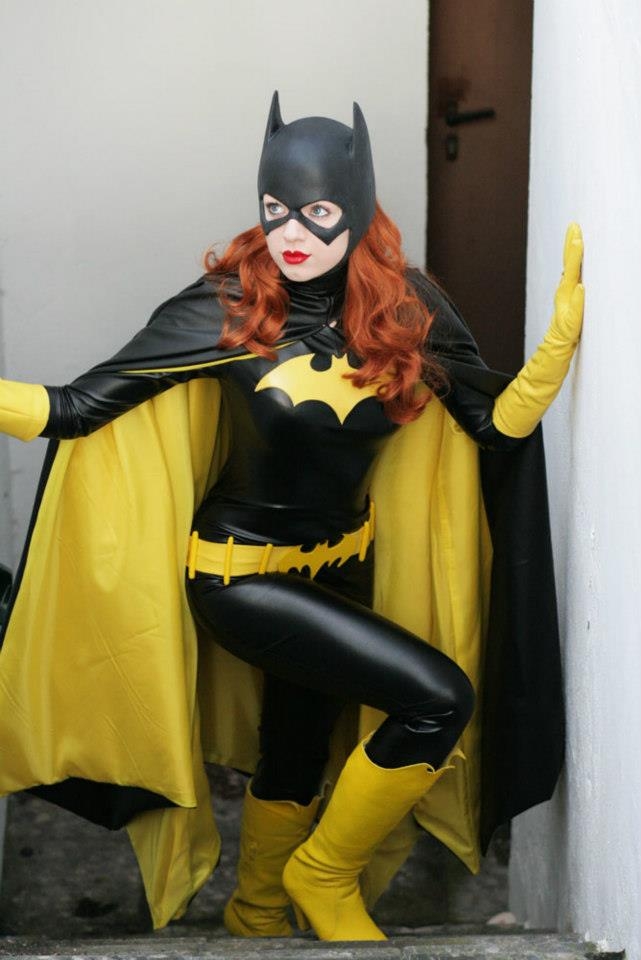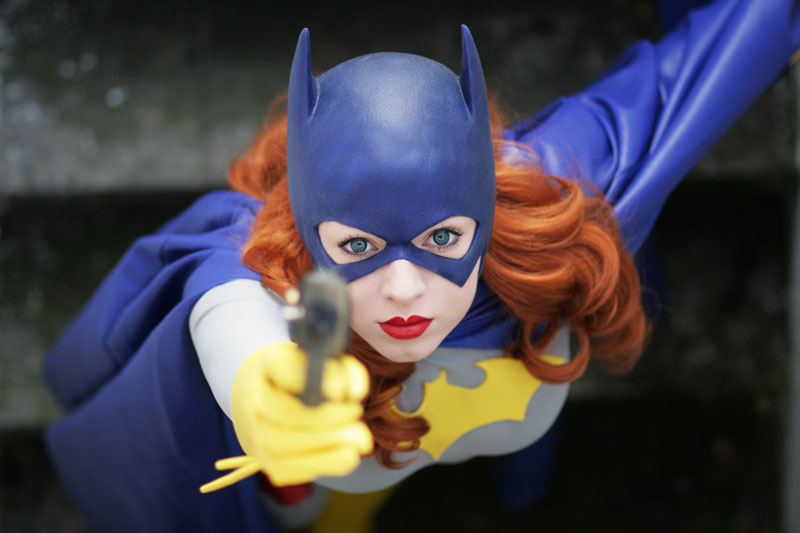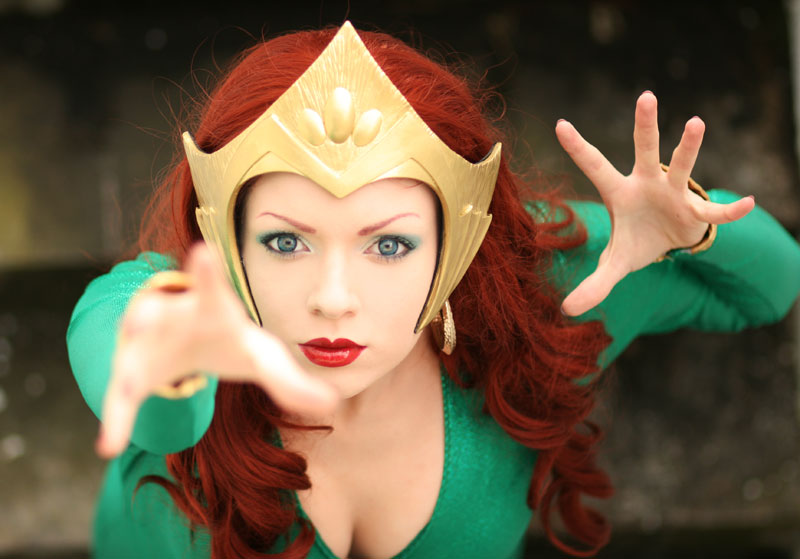Knightess Rouge: On the Serious Business of Cosplay
FTC Statement: Reviewers are frequently provided by the publisher/production company with a copy of the material being reviewed.The opinions published are solely those of the respective reviewers and may not reflect the opinions of CriticalBlast.com or its management.
As an Amazon Associate, we earn from qualifying purchases. (This is a legal requirement, as apparently some sites advertise for Amazon for free. Yes, that's sarcasm.)

Comic conventions have come a long way since I first began attending them back in the mid 1980s. Back then, even the large conventions -- in this case the Chicago Comicon, pre-Wizard World -- were pretty much glorified flea markets with a focus on comics, games and toys, with the big plus being that your favorite artists and writers would be in attendance. Oh, and to get an autograph, you just had to stand in line -- not buy a ticket. (If anyone wants to hear my Peter David story regarding book signings, I never tire of telling it.)
Even then, there were fans who wanted to take things up a notch and create costumes of their favorite comic book heroes and villains. I myself created a hand-made Joker outfit that largely consisted of a white pair of pants and a white Don Johnson cotton jacket that had been soaked in purple Rit, white pancake makeup, lipstick, and a pistol that popped out a "BANG!" flag. That was about as elaborate as things got in those days.
Skip forward twenty-plus years. My convention going days have been long behind me, but I'm still a fan. My desk at work contains a shrine to DC Comics' Batgirl character. When a coworker emailed me a Batgirl photograph he had found, my first reaction was, "This is a statue I have to keep a look out for." It was perfectly formed. The hair looked real, the face a fine porcelain delicately carved. Then he sent me a second photo -- in a different pose. And that's when I realized this was not a statue. This was a higher artform. This was someone who had transformed her very self into the picture-perfect image of a comic book character.
Obviously, I could not convince her to sit on my shelf with the rest of my Batgirl items for the rest of her life (or even a few minutes). But I was able to track down the artist -- Knightess Rouge -- and convince her to acquiesce to a handful of fanboy questions about her elaborate designs.

Part of what makes your outfits stand out in the world of cosplay -- a portmanteau of "costume" and "play" for the uninitiated -- is the high level of quality. There's obviously more than just stitching cloth together here. What kinds of materials do you look for when designing a costume?
It all depends on the character. When I started working on my first Batgirl costume, I did a lot of research for the right material. She is an experienced fighter, very athletic, so the fabric needed to be stretchy and shouldn't limit my mobility. It needed to be able to handle weather changes, since she moves around in the city all night. In the end, I went with a stretchy thin pleather that was thick enough to keep me warm and dry, but also didn't limit my movements.
Galadriel on the other hand is a very elegant and magical character. I used a thin but heavy fabric to achieve a "floating" look for the dress. I used two layers of that fabric, and then another layer of lace.
Whenever I decide to make a character's costume I do a lot of research and think about the personality and environment of the character -- what would be useful and realistic in her situation and how I'm able to achieve it on the small budget I have.
Is it important to you that everything of a costume be custom-made, or do you allow for some pre-built pieces? (For instance, things like the Batgirl cowl and batarang.) And how big of a factor is the cost of hand-made vs. pre-made?
I allow pre-build pieces whenever I'm not able to make something properly with the budget I have. The Batgirl cowl, for example, was something I would've never been able to make by myself and I already knew ReevzFX's work was stunning, so I decided to order his work. The Batarang was more like a spontaneous buy, because my friend looked for a present for her sister and it came in two. We decided to get it together and I kept one of the Batarangs. However, the more I work on costumes, the more I want to make all these things by myself. One year ago it looked a little different. Now I want to try to avoid getting custom-made pieces and try more new things by myself.
 Costumes are a time consuming part of the equation to successful cosplay. But the photos you put up on your page are stunning -- not just because of the model, but because of the settings, the poses, and the lighting. Do you work with someone to take these photos, and what goes into selecting location and poses?
Costumes are a time consuming part of the equation to successful cosplay. But the photos you put up on your page are stunning -- not just because of the model, but because of the settings, the poses, and the lighting. Do you work with someone to take these photos, and what goes into selecting location and poses?
Yes, I do! My best friend Janet Drake takes all my cosplay pictures, and I'm extremely happy about that. We've been working together for such a long time, so she knows exactly how I want the pictures to look. I didn't do many on location shoots so far, but that's something I definitely want to change and improve. For the poses, I always let the comics inspire me. I read over them right before the photoshoots, and pose in front of the mirror to get a feeling for my movements. It definitely helps.
Given how well-received the photos of your cosplay outings have been, have you considered moving to another level -- a fan-film short?
I've never thought about it. I'm a rather shy person, and I'm not sure if I'd make a good actress. I love to slip into the role of a character, but I guess for a film you have to be more conscious about yourself. A fan-film is a really exciting thought, but yeah... I'm not sure if I could handle it.
Hollywood often feels it must redesign costumes for films to make them seem more "believable." Do you find yourself needing to make certain changes from the comic book image when designing a costume, or do you always try to stick with the drawn image?
Usually I try to stay as close as possible to the drawn image. There are certain costumes where I have the urge to overthink the costume and make small changes, but usually I want to bring the character to life exactly how I got to know them.
I can understand that many costumes need to be re-designed to work in a movie, because... well, I guess we all know there are costumes that look gorgeous, but would be totally obstructive in a real fight. We're humans and real clothes just don't work like they do in comic books. Lately I have more and more the urge to start designing my own re-designs of existing superhero costumes -- costumes that are believable and useful in today's world. I guess that's something that I'd like to achieve in the following years.
Anyone who has ever rented a costume knows how delicate they can sometimes be. How versatile are your costumes? They won't block bullets, but can you move comfortably in them? Run? Leap? Swing from rooftops?
When I plan a costume, I always try to stick to materials that would work in real life and are useful instead of obstructive. It doesn't always work, because my budget is pretty limited, but I try to find a way that works for me. When I made my Batgirl costume, I decided to use pleather instead of lycra, because it protects me from the cold (considering that Batgirl mostly acts at night, often at the top of some buildings in strong wind) and also doesn't get destroyed that easily. Almost all the parts are out of pleather, because of these reasons.
When I do outfits that have to look very comic like - like the Silver-Age Batgirl costume - then I'm fine with using materials like lycra. The good thing about lycra is that I am not limited in my movements (which I am sometimes in my pleather suit). It's like wearing a super comfortable gymnastic suit. I can move comfortably in all of them, and also run and leap. I guess that's a good thing. My costumes are usually not very delicate, but it's my big dream to make costumes that would completely work in real life.



